Bamberg is a beautiful example of a medieval Bavarian town - so much so that the city in Upper Franconia has its own UNESCO World Heritage site listing.
Built on seven hills, the city of Bamberg is often compared to Rome, with its mixture of religious and administrative buildings dating back to the Middle Ages.
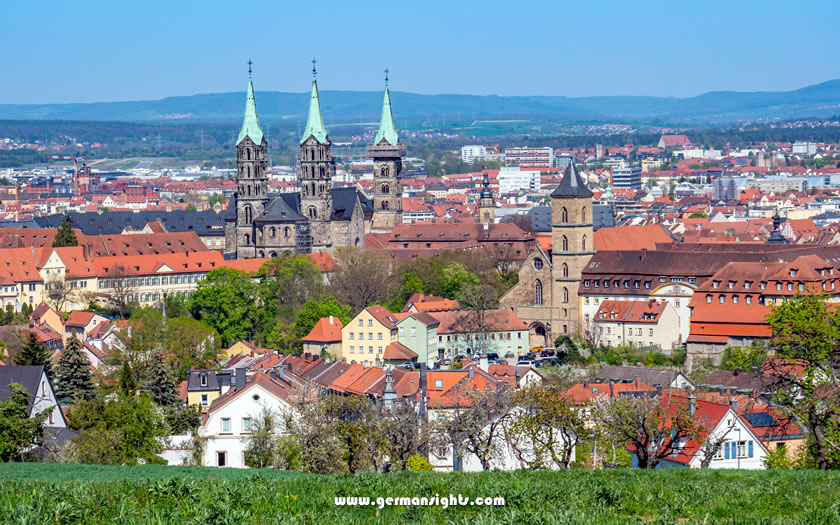
View over Bamberg in Upper Franconia
And, Bamberg being located in Bavaria, it is also renowned for its breweries and its distinctive local beer with a smoky taste. Sample a drop of the Bamberg flavour in a brewery beer garden in the old town.
Nuremberg Airport is the closest flight destination for Bamberg - the problem is that the relatively small airport only has a restricted range of flights.
Distance to Nuremberg Airport: 58km
Distance to Frankfurt Airport: 210km
Distance to Munich Airport: 220km
Two of Germany's largest airports are likely to offer all the destinations that any international traveller would need, as well as having good public transport and motorway connections to the town.
Bamberg's main railway station is situated to the northeast just over a kilometre outside the old town. It is part of the high-speed rail link between Berlin and Munich and thus has good national and international connections, as well as regular regional services to Würzburg, Bayreuth and Frankfurt am Main.
Bamberg is also part of the local S-Bahn service from Nuremberg.
Bamberg is an awesome place to visit and stay for a while with plenty of options for accommodation, from hotels and apartments to hostels and guesthouses.
If you know when you are planning to go but haven't decided on accommodation, then use the map below to get an idea of which properties are available and to compare prices during the period you wish to travel.
Enter your proposed dates and use the '+' to zoom in on a location and reveal more properties. Click on the price above a property to see more information.
(Please note that this selection will also include some guesthouses, pensions and self-catering apartments for those who are interested in that form of accommodation!)
If you know when you are planning to go but haven't decided on accommodation, then use the searchbox below to get an idea of which properties are available and to compare prices during the period you wish to travel.
Bamberg is a treasure trove of historical wonders that date back to the Roman Empire.
Its magnificent buildings, its rich cultural heritage, and its distinctive geography reflect its long and varied history.
Here are some of the most remarkable aspects of Bamberg’s history that you should not miss.
Bamberg's history began in the Stone Age, when people settled in the area near the river Regnitz.
But it was not until the 10th century that Bamberg became a city. That's when a fort was built on the hill where the cathedral stands today.
The fort was the first written record of Bamberg and the start of its importance. The fort soon became a cathedral, which made Bamberg the seat of a diocese.
The cathedral was a symbol of Bamberg's religious power and prestige. But it was not easy to build.
The first two cathedrals burned down. The current one was finished in the 13th century.
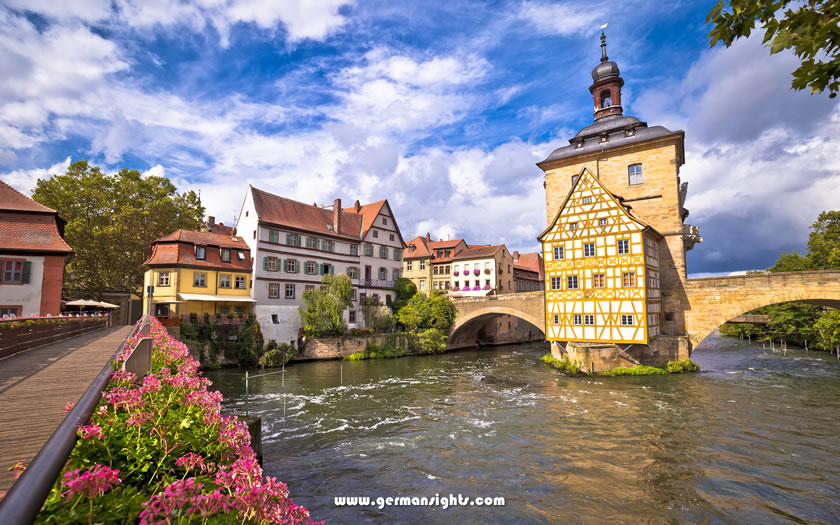
The old town hall above the Regnitz river in Bamberg's old town
The cathedral is part of the reason why Bamberg is a UNESCO World Heritage Site.
The World Heritage Site includes three parts of Bamberg:
Bamberg reached its peak in the early Middle Ages.
It was recognised as an important and influential city in the Holy Roman Empire.
Bamberg was ruled by Henry II and his wife Kunigunde, who were both saints.
They made it a stronghold against the Slavs to the east and a model for other German cities.
But after they died, Bamberg faced many troubles.
It was ruled by prince-bishops, who were both religious and political leaders. They often clashed with the merchants and citizens, who wanted more freedom and rights.
Bamberg also suffered from violence and persecution against Jews and witches. And it was hit by plagues and wars that killed many people.
For example, the city lost 40% of its population in the Thirty Years' War.
Bamberg recovered from its dark times in the 18th century, when it became more prosperous and beautiful again.
It was under the control of prince-bishops who built many Baroque buildings, such as the New Residence, which is now a museum.
But Bamberg's independence did not last long.
In the early 19th century, Napoleon invaded Germany and changed everything.
He took away Bamberg's religious power and made it part of Bavaria. He also occupied it for a while with his French troops.
Bamberg grew rapidly in the late 19th century, thanks to new transport links. A new canal connected two major rivers: the Rhine and the Danube. It also joined the railway network that connected it to other cities.
Bamberg’s population doubled by the end of the century and then doubled again after the Second World War, when it welcomed many refugees.
Bamberg is now a modern and vibrant university city of just under 75,000 people in the Upper Franconia region of northern Bavaria.
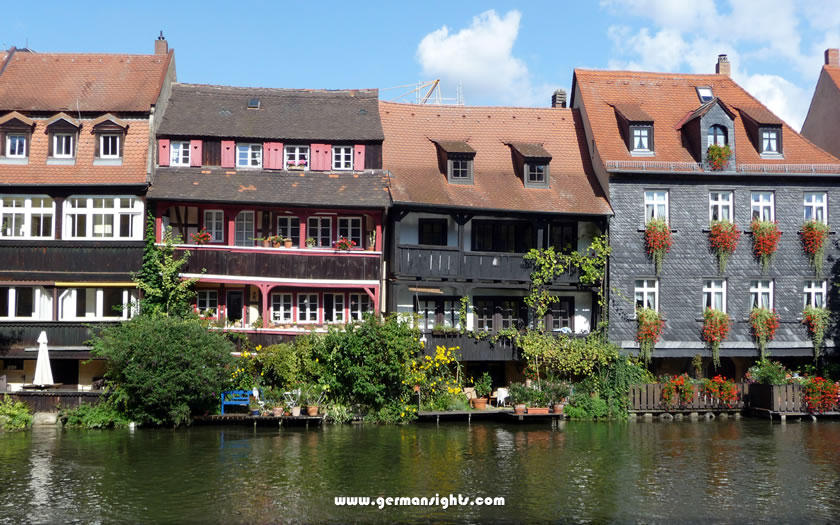
'Little Venice' on the Regnitz in Bamberg
But it has not forgotten its roots and its heritage.
It preserves and celebrates its history and its traditions.
That’s why Bamberg is a must-see destination for anyone who loves history, culture, and beauty.
Bamberg's seven hills are:
The Domberg is the most important of them, with the imposing open space of the Domplatz bounded by the New Residence, Bamberg cathedral and the Old Household (Alte Hof) of the prince-bishops.
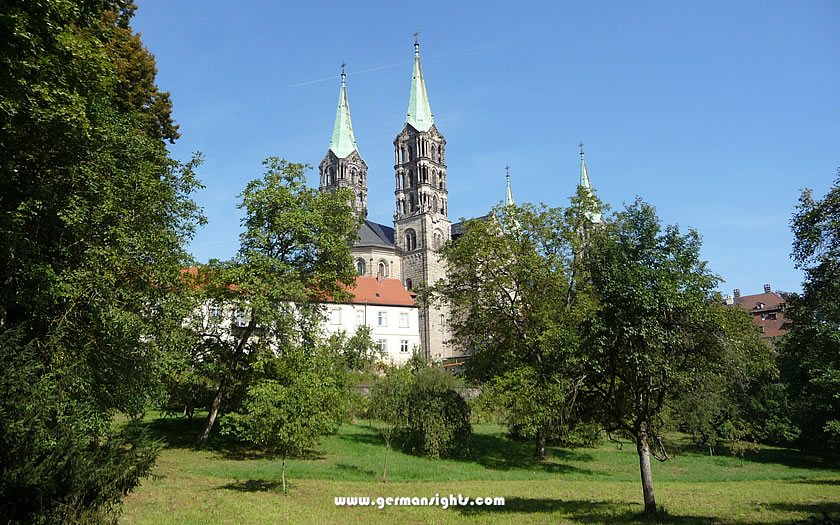
The Domberg in Bamberg
The silhouette of St Michael's monastery can be seen from the centre of Bamberg on the Michaelsberg. The former monastery church can be visited and the surrounding buildings also house the interesting Franconian Brewery Museum, run by beer enthusiasts.
The Jakobsberg, next to the Michaelsberg, hosts the Church of St Jacob and lies on the old pilgrims' trail to Santiago de Compostela on the northern coast of Spain.
The Altenburg is a little way outside the centre of Bamberg but the tower of the former fortress is a landmark that can be seen from most parts of the city. Tours are available around the historic building.
Back in the city, the Kaulberg is the next hill moving counter-clockwise. The Carmelite monastery and the Church of Our Lady (the Obere Pfarre) are situated here, as well as one of the youth hostels.
Down towards the banks of the river Regnitz, the Stephansberg is somewhat unsurprisingly home to the Chruch of St Stephen, the location of another of Bamberg's churches whose origins can be traced back to Henry and Kunigunde.
The final hill, the Abtsberg, is slightly to the north of the Michaelsberg and is these days mainly a residential area with no particular 'sights'.
If Germany is famous for its beer and the southern state of Bavaria renowned for its beer purity law, then the Bavarian city of Bamberg sees itself as 'Bierstadt' ('Beer Town').
Nowhere else, say the Bambergers, are there so many breweries as in the city and the surrounding districts. Nine private breweries still operate in the city itself.
It's not only the quantity of beer in Bamberg - the city also boasts its very own type of beer, the smoky 'Rauchbier'.
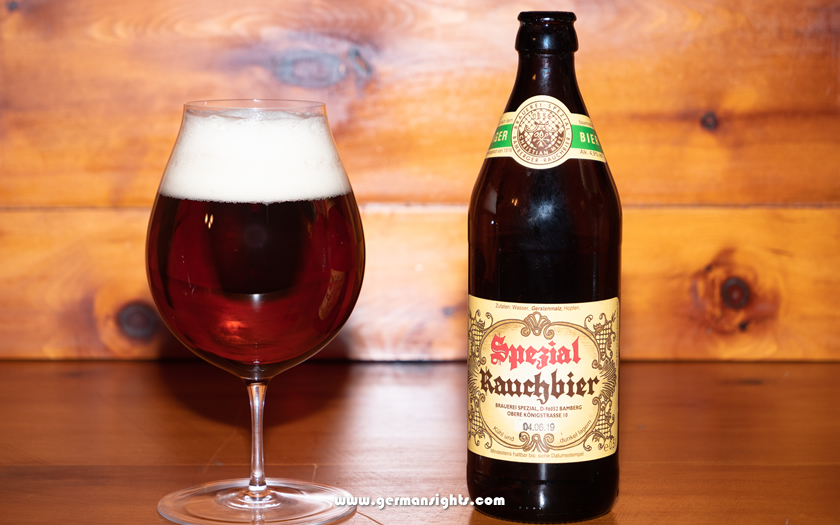
The smoked Rauchbier of Bamberg
Bamberg once had 68 different breweries and the art of brewing can be traced back to the 11th century in the city.
In those days, it was the monks who were granted the brewing rights and, as the monks suggested that everyone should have their daily ration of beer, the population became good customers. In the 15th century, every inhabitant averaged around 440 litres a year.
In these more health-conscious days that figure has shrunk a little bit but still stands at an impressive average of 280 litres.
The Bamberger speciality of 'Rauchbier' (smoked beer) comes from drying the malt over an open fire, usually using beechwood.
The Franconian Brewery Museum is located on the Michaelsberg and is open Wednesday to Friday in the afternoon and on the weekends from 11.00 in the summer months.
Website: www.brauereimuseum.de
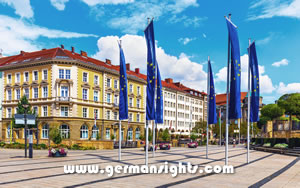
Bayreuth is renowned for its annual Bayreuth Festival, dedicated to showcasing the operas of Richard Wagner. Explore the charming streets lined with Baroque and neoclassical architecture, visit the impressive Margravial Opera House, and relax in the Hermitage parklands.
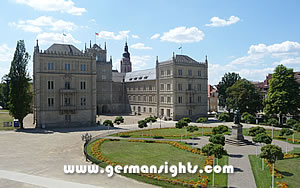
The town is home to the massive Veste Coburg, a fortress above the centre which can be reached on foot through the former court gardens. Coburg also has an attractive old town below which is worth taking the time to explore.
Bamberg's sizeable tourist office is located on the 'island' on the edge of the old town area above one of the major underground car parks. It is open all year round - apart from some major religious festivals - with slightly shorter opening hours at weekends and on minor public holidays.
Website: www.bamberg.info